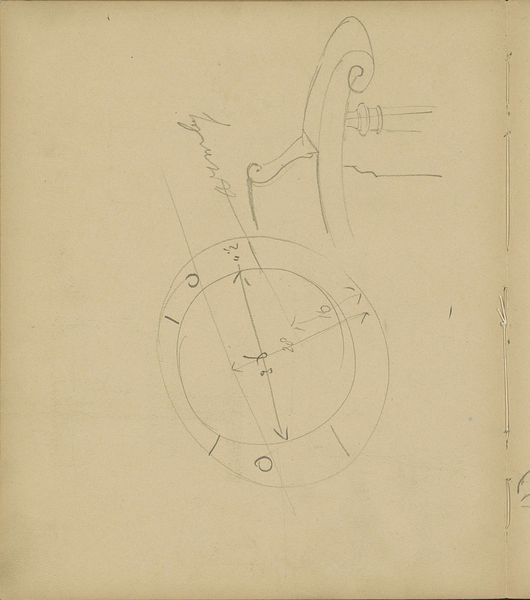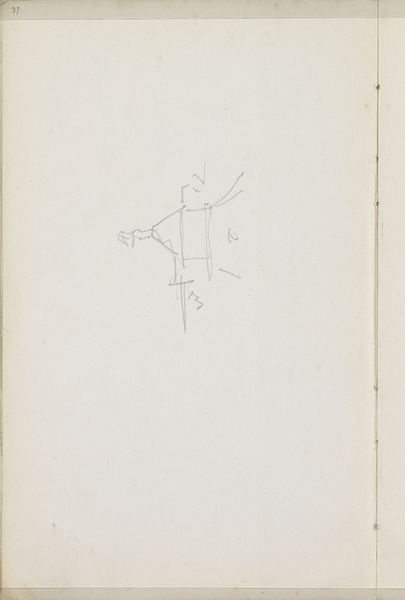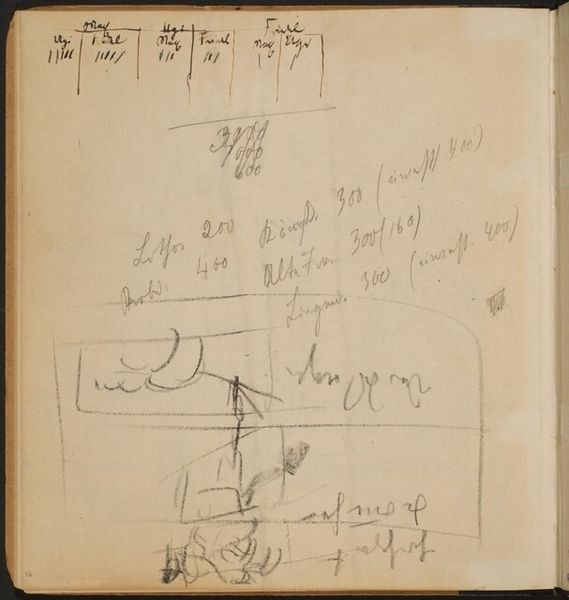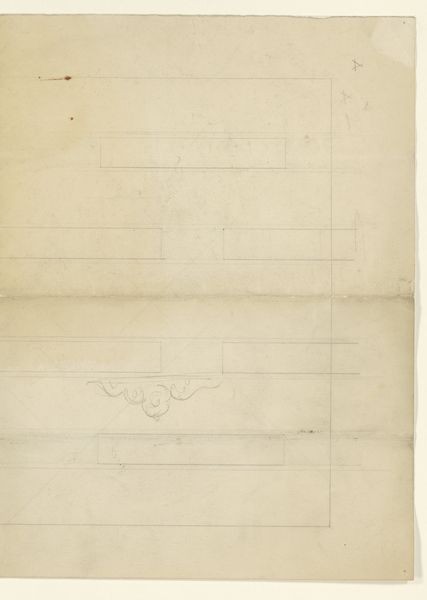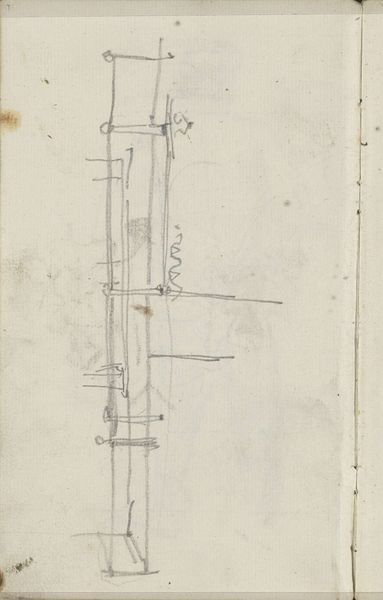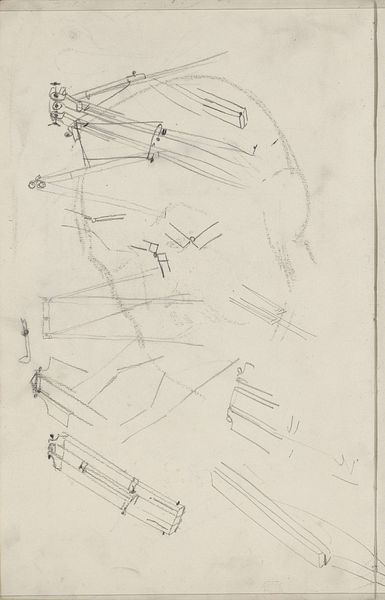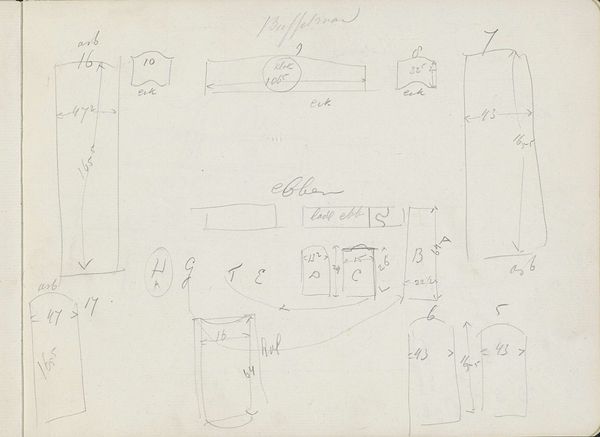
drawing, paper, pencil
#
drawing
#
art-nouveau
#
paper
#
geometric
#
pencil
#
abstraction
Copyright: Rijks Museum: Open Domain
Editor: Here we have Carel Adolph Lion Cachet’s "Studie" from around 1906, a pencil drawing on paper held at the Rijksmuseum. It's quite abstract, almost a collection of technical sketches, but I find the overlapping lines and geometric forms very engaging. What do you see in this piece? Curator: Its formal arrangement presents an intriguing visual puzzle. Note the contrast between the hard lines and the soft shading achieved with the pencil. How does this juxtaposition inform your understanding? Editor: I hadn’t considered the shading, I was focusing more on trying to decipher what these geometric forms could be! Curator: Precisely. The essence of this piece lies not in its representational qualities but in its articulation of space and form through line. Consider the dynamism generated by the angled strokes against the stability of the horizontal registers. Observe, also, how this is not the flat plane of illusionistic paintings. This foregrounds the raw texture, the literal reality, of the page itself. Editor: So it's more about the construction of the image and the relationship between these elements, rather than the subject itself? Curator: Precisely. Look how the varying thickness and intensity of lines draw the eye around the composition. It almost prefigures minimalist approaches. Editor: This has totally changed my view. I went from thinking it was a random assortment of shapes to appreciating it as a study of pure form and spatial relationships. Curator: Indeed. Sometimes what appears simple can reveal intricate artistic strategies when examined closely.
Comments
No comments
Be the first to comment and join the conversation on the ultimate creative platform.
